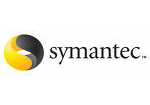Firebird Maestro online Help
Packages
A package is a group of procedures and functions managed as one entity. The notion of “packaging” the code components of a database operation addresses several objectives:
| • | To facilitate dependency tracking |
| • | To facilitate permission management |
| • | To enable “private scope” |
Packaged routines do not have individual privileges. The privileges act on the package. Privileges granted to packages are valid for all package body routines, including private ones, but are stored for the package header.
All programming languages have the notion of routine scope, which is not possible without some form of grouping. Firebird packages also work like Delphi units in this regard. If a routine is not declared in the package header (interface) and is implemented in the body (implementation), it becomes a private routine. A private routine can only be called from inside its package.
New packages are created within Create Package Wizard. In order to run the wizard you should either
| • | select the Object | Create Database Object... main menu item; |
| • | select the Package icon in the Create Database Object dialog |
or
| • | select the Package list or any object from that list in the explorer tree; |
| • | select the Create New Package... item from the popup menu |
or
| • | open the schema in Schema Editor and the Packages tab there; |
| • | press the Insert key or select the Create New Package... item from the popup menu (alternatively, you may use the corresponding link of the Navigation Bar). |
To create a new package with the same properties as one of the existing package has:
| • | select the Object | Duplicate Database Object... main menu item; |
| • | follow the instructions of Duplicate Object Wizard. |
|
Packages can be edited within Package Editor. In order to run the editor you should either
| • | select the package for editing in the explorer tree (type the first letters of the package name for quick search); |
| • | select the Edit Package ... item from the popup menu |
or
| • | open the schema in Schema Editor and the Packages tab there; |
| • | select the package to edit; |
| • | press the Enter key or select the Edit Package item from the popup menu (alternatively, you may use the corresponding link of the Navigation Bar). |
You can change the name of the package using the Rename Package dialog. To open the dialog you should either
| • | select the package to rename in the explorer tree; |
| • | select the Rename Package item from the popup menu |
or
| • | open the schema in Schema Editor and the Packages tab there; |
| • | select the package to rename; |
| • | select the Rename Package item from the popup menu (alternatively, you may use the corresponding link of the Navigation Bar). |
|
To drop a package:
| • | select the package to drop in the explorer tree; |
| • | select the Drop Package item from the popup menu |
or
| • | open the schema in Schema Editor and the Packages tab there; |
| • | select the package to drop; |
| • | press the Delete key or select the Drop Package item from the popup menu (alternatively, you may use the corresponding link of the Navigation Bar) |
and confirm dropping in the dialog window.
|




 Download
Download Buy
Buy